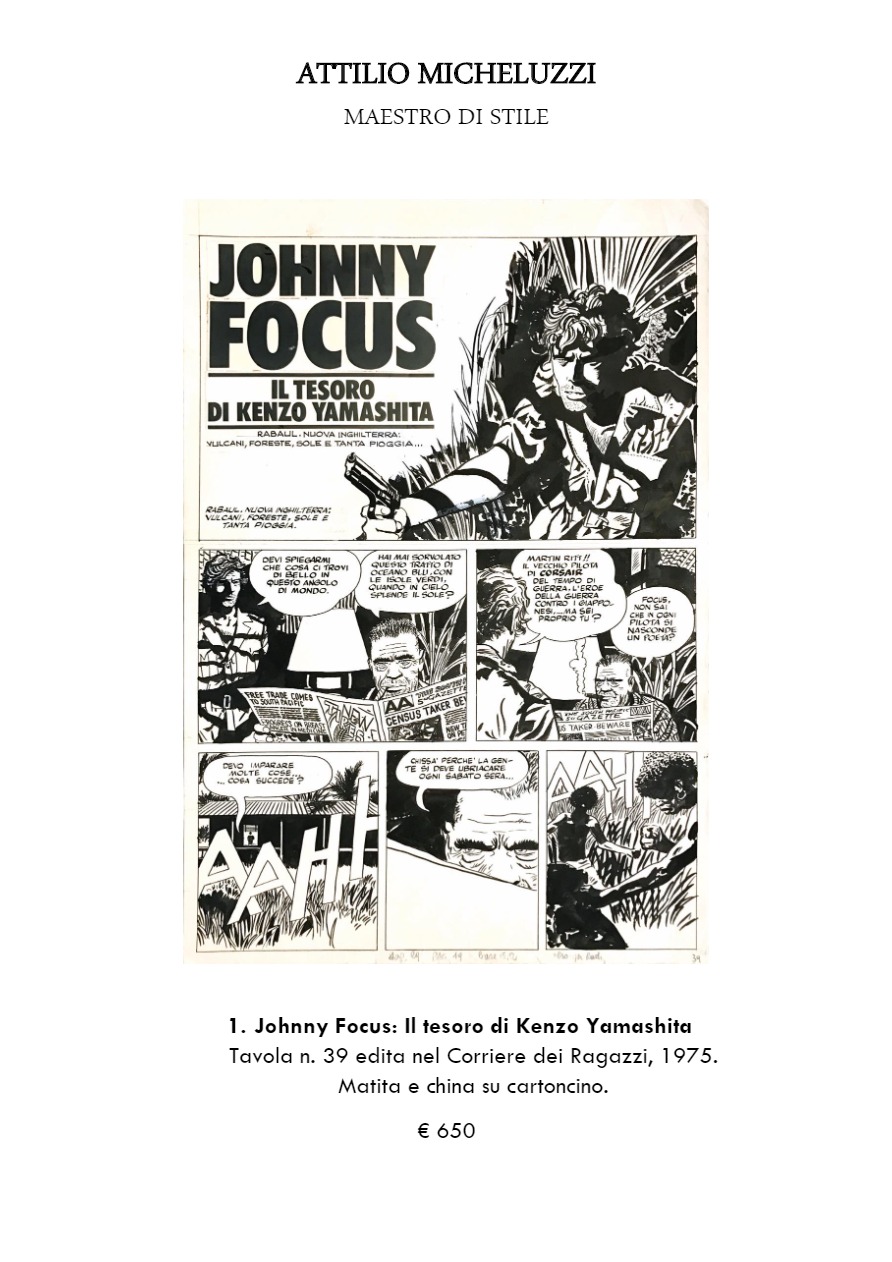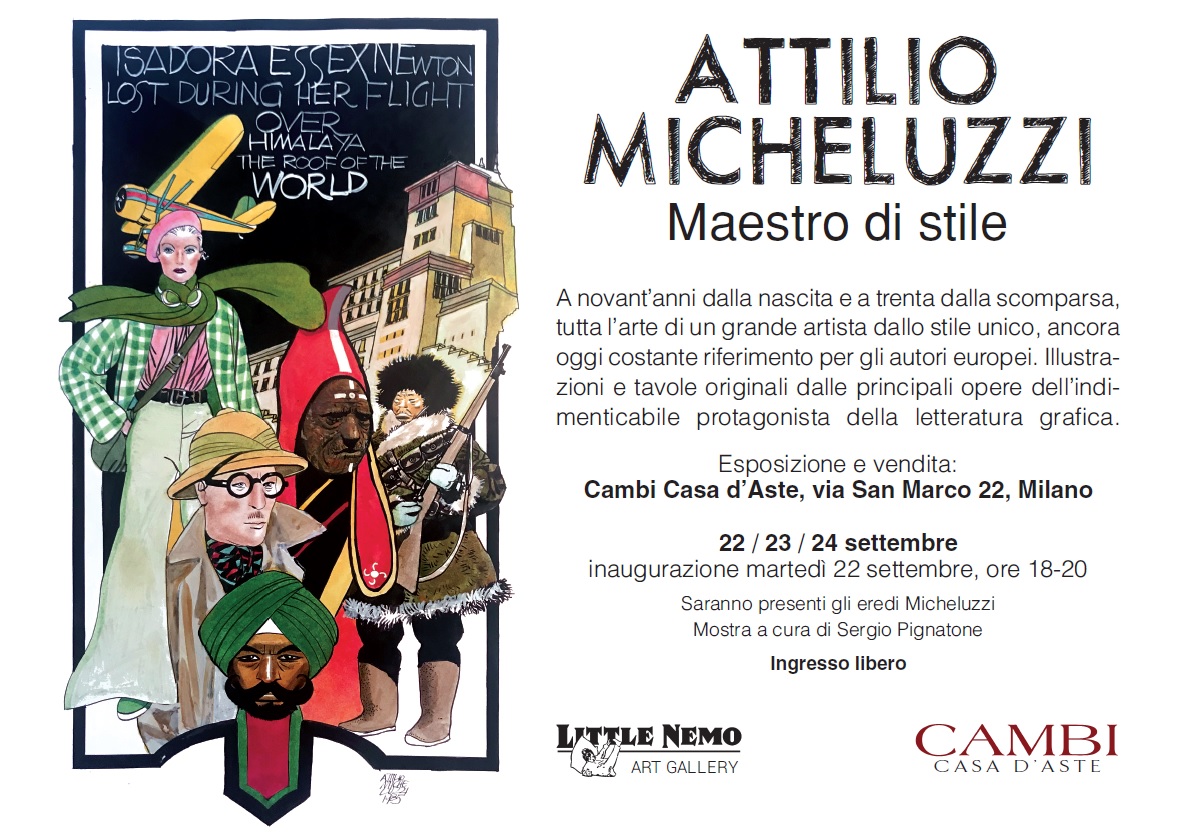

































































To commemorate the artistic contribution of Attilio Micheluzzi, 90 years after his birth, and 30 years after his passing, the Micheluzzi’s family, Little Nemo and Cambi Auction House presented the exhibition of some of his most significant creations.
In Milan, at Cambi’s, at via San Marco 22, from
A Milano, nella sede di Cambi, in via San Marco 22, from September the 22nd (inauguration at 6pm) to the 24th, a selection of Arts of the following works were exhibited for sale: Johnny Focus, Petra Chérie, Rosso Stenton, Florence Nightingale, Salvatore Giuliano, Bounty, Americani, Mermoz, Don Rodrigo-L’Innominato, Titanic, Martin Luther King, La Città Nascosta, La Guerra Civile Spagnola, Jesus Detective San, and other illustrations of historical themes. A bookshop was set up for the occasion, with the volume Little Nemo, edited by Santo Alligo: “Micheluzzi” and “Rosso Stenton”. Click here for more information on the event.

Attilio Micheluzzi: l’analisi di Adriano Olivieri
That of Micheluzzi – writes Adriano Olivieri – is essentially a Proustian search for lost time, already declared by the subtitle of the second volume dedicated to the ambiguous Marcel Labrume whose surname evokes precisely that psychological mistiness of an antihero who lives in a time and in a place with uncertain borders; be they geographical, professional or moral.
Micheluzzi invites readers to precarious terrain to leave them suddenly disoriented by means of a nervous and snappy script, made up of temporal ellipses that demand an active mental stitching on the part of the reader. The “lector in fabula”, with the uncertainty of the source and authenticity of the information he is reading, finds himself in the midst of a literary collision, a sort of derailment in which the conscious voice of the protagonist interpenetrates, for example Marcel who it acts by expressing itself (in the cloud) with the present indicative, and the narrating voice of Marcel’s memory (in the caption) which, on the model of cinematographic noir, expresses itself with the remote past to tell, off-screen, past facts. The clarity of the screenplay thus slips on slippery literary ground, a linguistic manifestation of the psychological ambiguity of the characters as well as of the historical contingency. The result is misunderstanding and the reader is in constant danger of misunderstanding, just as happens to the protagonists. Equivocity that also echoes in the illustrations where objective shots alternate with subjective, semi-subjective and false subjective in a continuous tensive combination between what is and what seems, between true and presumed such. In the end, the lost time that Micheluzzi evokes with his compelling illustrated literature is not only that of yesteryear he longed for but also the enchanted and terribly adventurous time that invites readers to find within themselves.